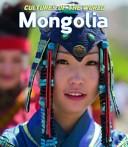
This book provides comprehensive information on the geography, history, wildlife, governmental structure, economy, cultural diversity, peoples, religion, and culture of Mongolia.

This book provides comprehensive information on the geography, history, wildlife, governmental structure, economy, cultural diversity, peoples, religion, and culture of Mongolia.
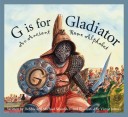
According to Roman legend, what famous twins were raised by a she-wolf? Who wrote the epic poem, The Aeneaid? What famous leader brought law and stability, yet was stabbed to death by a group of senators? Life in ancient Rome was certainly not for the faint of heart! In G is for Gladiator: An Ancient Rome Alphabet, readers are given an A-Z introduction to ancient Rome, including its social, political, and civil customs and practices. Husband-and-wife writing team Debbie and Michael Shoulders explore topics such as Roman law, architecture, mythology, and of course, the ultimate ‘fight club’ (gladiatorial combat). From the relaxed surroundings of the public baths to the rigid codes of the military legions, Rome’s ancient civilization is unveiled. Colorful, entertaining artwork from Victor Juhasz, the illustrator of Z is for Zeus: A Greek Mythology Alphabet, brings it all to vivid life.
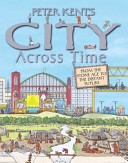
This book illustrates the evolution of an imaginary European city from the Stone Age to the distant future.
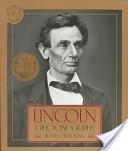
A description of the boyhood, marriage, and young professional life of Abraham Lincoln includes his presidential years and also reflects on the latest scholarly thoughts about our Civil War president.
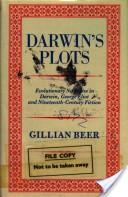
Gillian Beer’s classic Darwin’s Plots, one of the most influential works of literary criticism and cultural history of the last quarter century, is here reissued in an updated edition to coincide with the anniversary of Darwin’s birth and of the publication of The Origin of Species. Its focus on how writers, including George Eliot, Charles Kingsley and Thomas Hardy, responded to Darwin’s discoveries and to his innovations in scientific language continues to open up new approaches to Darwin’s thought and to its effects in the culture of his contemporaries. This third edition includes an important new essay that investigates Darwin’s concern with consciousness across all forms of organic life. It demonstrates how this fascination persisted throughout his career and affected his methods and discoveries. With an updated bibliography reflecting recent work in the field, this book will retain its place at the heart of Victorian studies.
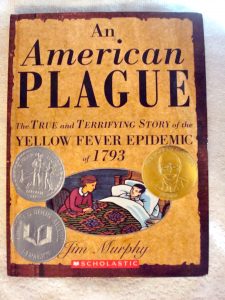 It’s 1793, and there’s an invisible killer roaming the streets of Philadelphia. The city’s residents are fleeing in fear. This killer has a name–yellow fever–but everything else about it is a mystery. Its cause is unknown and there is no cure. This powerful dramatic account by award-winning author Jim Murphy traces the devastating course of the epidemic. An American Plague offers a fascinating glimpse into the conditions in American cities at the time of our nation’s birth while drawing thought-provoking parallels to modern-day epidemics.
It’s 1793, and there’s an invisible killer roaming the streets of Philadelphia. The city’s residents are fleeing in fear. This killer has a name–yellow fever–but everything else about it is a mystery. Its cause is unknown and there is no cure. This powerful dramatic account by award-winning author Jim Murphy traces the devastating course of the epidemic. An American Plague offers a fascinating glimpse into the conditions in American cities at the time of our nation’s birth while drawing thought-provoking parallels to modern-day epidemics.
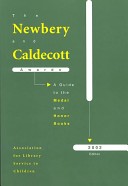
Each year, the Newbery and Caldecott Awards are awarded by the American Library Association to the most distinguished children’s books published the previous year.With up-to-date annotations for all the medal and honor books since the inception of the awards (Newbery in 1922 and Caldecott in 1938), librarians and teachers everywhere have come to rely on this indispensable guide for quick-reference, collection and curriculum development, and readers’ advisory. Fully indexed by title and author/illustrator, the 2007 edition includes background on the awards and photos of the new medalists and their books.New to the 2007 edition is a feature essay by author, Booklinks founder, and former children’s book editor for Booklist, Barbara Elleman, “The John Newbery Medal: The First Decade”.The Newbery and Caldecott Awards 2007 will help you introduce children to oustanding literature and illustration and support your own literature selections from the criteria used for these celebrated awards.For all those professionals committed to introducing literature to young people, “The Newbery Caldecott Awards, 2007 Edition” is the indispensable guide.
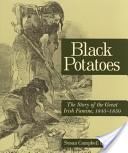
In 1845, a disaster struck Ireland. Overnight, a mysterious blight attacked the potato crops, turning the potatoes black and destroying the only real food of nearly six million people. Over the next five years, the blight attacked again and again. These years are known today as the Great Irish Famine, a time when one million people died from starvation and disease and two million more fled their homeland. Black Potatoes is the compelling story of men, women, and children who defied landlords and searched empty fields for scraps of harvested vegetables and edible weeds to eat, who walked several miles each day to hard-labor jobs for meager wages and to reach soup kitchens, and who committed crimes just to be sent to jail, where they were assured of a meal. It”s the story of children and adults who suffered from starvation, disease, and the loss of family and friends, as well as those who died. Illustrated with black and white engravings, it”s also the story of the heroes among the Irish people and how they held on to hope.
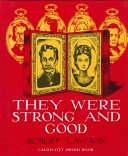
Awarded the Caldecott Medal in 1941, They Were Strong and Good is a classic book that follows the path of one family’s journey through American history. Robert Lawson introduces us to his forefathers and with them we brave Caribbean storms, travel to the wharf markets of New York, and fight in the Civil War. Amidst these adventures Lawson’s grandparents meet, marry, and raise a family, and later his parents follow the same cycle of life. But this book is more than just the story of one family, it’s a social history of our country.